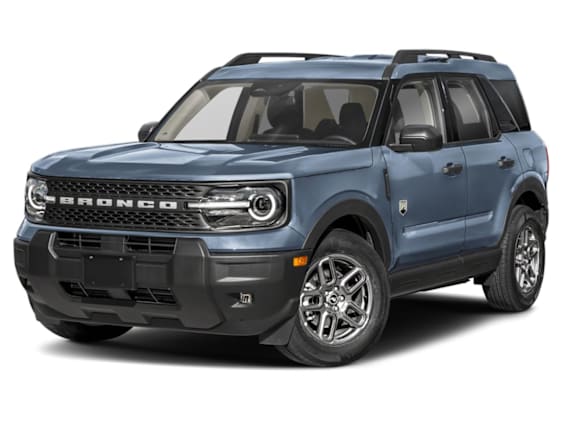The Bronco Sport is brimming with outdoorsy character, but it also has easy-to-use controls, a roomy cabin among the small SUV class, and decent handling agility. Although the standard engine produces some vibrations at low revs, the ride is firm, and the driver’s seat is short on adjustments, overall we found the Bronco Sport a fun vehicle that’s pretty easy to live with.
Like the Escape it’s based on, the Bronco Sport comes with a three-cylinder turbocharged engine mated to an eight-speed automatic transmission. This 180-horsepower mill produces a healthy dose of midrange punch, which means the engine rarely needs to be pushed hard. That’s good, because the engine runs out of steam at higher revs. The transmission shifts smoothly most of the time, however we found ourselves at times dabbing harder on the gas pedal just to get a quick downshift to avoid the annoying vibrations the engine makes when it’s lugging along at 1,500 rpm. We got 25 mpg overall in our tested Outer Banks trim, which is a few mpg below the class standouts.
Only high-end versions of the Bronco Sport get a much more refined 2.0-liter turbocharged four-cylinder engine that puts out an invigorating 250 hp. Regardless of the engine choice, all Bronco Sports come with four-wheel drive. Although its styling (and Ford’s marketing) might indicate otherwise, the Bronco Sport is not a true off-road-capable model. It’s a car-based SUV sprinkled with styling elements that shout “adventure.” As such, it’s adept on pavement, showing fairly nimble abilities on curvy roads. It was also stable through our avoidance maneuver—which simulates swerving quickly to avoid a vehicle or obstacle on the road—but it didn’t turn as sharply as we’d like; the front tires slid more than expected as our testers tried to keep the little SUV within our tight, coned-off course.
The ride is quite firm and tied-down. Rougher roads can bring about a choppy sensation, but it’s not a major drawback and we found it livable. The cabin stays mostly quiet but it’s marred by the engine’s rather uncouth growl when pushed hard. The Badlands version lends itself more to getting off the pavement by virtue of its elevated ride height, aggressive off-road-oriented 17-inch tires, and extra modes for its 4WD system. It doesn’t perform as well on the road though, requiring more steering input through turns and exhibiting noticeably more body roll.
The Bronco Sport’s interior is filled with a rugged vibe, with zippered pockets and straps on the back of the front seats, and prominent bucking bronco emblems. The boxy shape affords tons of headroom and good outward visibility, but the front seats are short on thigh support, and the bottom cushion’s angle can’t be adjusted without also pivoting the seat cushion forward. Rear-seat headroom is extremely generous and the bottom cushion delivers good under-leg support, but knee room is a little snug.
Ford's updated layout of the Sync 4 infotainment system display eliminated some of the large text and buttons, which we previously touted. Controls for everything, including climate, are located in the touchscreen, which has severe lag. Both Android Auto and Apple CarPlay wireless capability are standard. Practical interior details, such as the adjustable floodlights at the base of the rear hatch, are thoughtful and handy, as is the ability to open just the rear window section of the hatch.
Standard active safety and driver assist features include forward collision warning, automatic emergency braking with pedestrian detection, blind spot warning, rear cross traffic warning, lane departure warning, lane keeping assistance, lane centering assistance, and adaptive cruise control with lane centering.























